|
Environmental policy has made strides in reducing greenhouse gasses and embracing renewable energy. However, while the water is clearer, something still lurks in its shallows. Made famous by the Erin Brockovich case, chromium-6 still takes headlines even 23 years after becoming a national concern.
What is Chromium-6? Chromium-6, or hexavalent chromium, is a mineral that occurs naturally in the environment as well as artificially in manufacturing waste. Despite being organic, the Environmental Working Group (EWG) has linked it to cancer in rats and humans. Why is Chromium-6 a Health Concern? As stated above, the EWG has linked consumption or exposure to high quantities of chromium-6 to cancer in humans and rats. Furthermore, the Occupational Safety and Health Administration (OSHA) alerts that extended exposure to chromium-6 may damage eyes, lungs, and respiratory pathways. Chromium-6 also contains corrosive properties, such as aggravating allergic contact dermatitis (rashes) on the skin and eroding tooth enamel. How Does Chromium-6 Contaminate Water? Chromium-6 occurs naturally in the environment and is most common in topsoil and rocks. Industrial waste, such as that of leather, textiles, metal alloys, and pigments is the source of artificial occurrences of this same mineral. The fact that it thrives in topsoil and rocks means that naturally occurring chromium-6 can easily reach water sources, like lakes, ponds, and older wells. Furthermore, leather and textile industries usually do not provide a barrier between their waste and the ground, allowing industrial chromium-6 to seep into the soil. Finally, as metal alloys and pigments typically form the bulk of architectural projects, what chromium-6 they contain may reach water sources, as well. Is it Regulated? OSHA has established regulations for chromium-6 in shipyards, construction, and general industry. Simply put, these guidelines require that all who are exposed to chromium-6 wear some sort of protective covering. As far as water goes, things are not as strict. The Environmental Protection Agency (EPA) has set a limit for total chromium, at 100 parts per billion (ppb). However, since chromium-6 and chromium-3, an essential nutrient, exist in unequal amounts, chromium from some water sources may consist of 100% chromium-6. Some independent groups have called for stricter guidelines. However, they are not in effect nationally. California’s Office of Environmental Health Hazard Assessment (OEHHA), for instance, set a public health goal of 0.02ppb in 2011. Unfortunately, this legislation was struck down in 2014, for the far more lenient 10ppb. In 2010, the Environmental Working Group (EWG), a non-governmental organization, has conducted its own research, finding chromium-6 in over 75% of 60,000 samples of drinking water around the United States. While this evidence supported the OEHHA’s case for a legal limit, it did not spur any legislation of its own. Simply put, chromium-6 is not, as itself, regulated by national policy. What results is that both private- and public-sourced water consumers are at risk for cancer, gastrointestinal disruption, and skin inflammation. Fortunately, you can gauge your risk with a test. While municipally-administrated screenings are usually more accurate, personal tests are also available online. How to Remove Chromium-6 From Your Water The United States has yet to establish a protocol for removing chromium-6 from municipal water supplies. However, products such as Adya Clarity® convert chromium-6 to chromium-3, a vital nutrient your body uses to process sugars, proteins, and fats. Adya Lab Test Other solutions include buying bottled water or collecting spring water. Nonetheless, bottled water usually comes from a tap, and bottle waste does more harm to the environment than it benefits, public health. Spring water comes without the waste, but not without the exposure to topsoil, sediment, and air pollution that may contain chromium-6. Environmental science and steadfast activism have helped the conservationally-concerned fight for renewable energy, sustainable sources, and healthy resources for consumers, and work remains to be done. Although it will be long before lawmakers put hexavalent chromium at the top of their lists, using Adya Clarity® will help you cultivate your own healthy environment and, as news spreads, community. Doctors in Los Angeles are urging people exposed to a gas leak from a broken natural gas well, to EVACUATE THE AREA to stop breathing toxic fumes.
According to health professionals, hundreds of citizens are suffering severe effects from breathing methane and volatile chemical carbons in gases being released from underground from a cracked natural gas well on the Porter Ranch in the Aliso Canyon outside of Los Angeles. Symptoms range from nose bleeds, to swollen throats, to difficulty breathing, to respiratory distress, then failure, then cardiac arrest. Doctors are now publicly telling citizens "get out." Officials confirm this is the largest natural gas leak ever recorded and that it is jeopardizing health and causing evacuations for thousands of Southern California residents… Methane is estimated to be leaking out of the Aliso Canyon site at a rate of about 62 million standard cubic feet, per day… it’s potentially devastating on a planetary scale… This is what the cracked gas well looks like; two large holes in the ground: " Thousands suffer nose bleeds and vomiting during ‘worst environmental disaster since BP’ — An invisible environmental disaster which has been compared to the 2010 Gulf of Mexico BP oil spill has forced thousands of people from their homes… with nosebleeds, headaches and nausea, after millions of kilograms of invisible methane was released into the air… Residents claim the gas, which has drifted into surrounding neighborhoods, is making them suffer from nausea, nosebleeds, and headaches" ' Residents have suffered symptoms that include "nausea, abdominal discomfort, dizziness, light-headedness, some shortness of breath … even some nosebleeds,” said medical toxicologist Cyrus Rangan of the Los Angeles County Department of Public Health… scientists are monitoring levels of benzene, a known cancer-causing agent' "The carcinogen benzene was found well above expected levels in one government air sample… the sheer size of the release has been shocking…" "We’re seeing asthma increases, we’re seeing people who are using inhalers more often, primarily a lot of respiratory problems… If you have a chance to leave, if you’re able to leave… if you have a chance to relocate, do it now. I’m telling you, it’s really critical." "“I have seen dozens of cases of pets being ill or becoming ill and I do believe it’s related to the exposure to the gas… I’ve seen dogs, cats, birds, pocket pets… The primary symptoms I’ve seen are gastrointestinal vomiting primarily. One dog actually had a torsion — I think is related to it — where the stomach flips on itself, not a good thing. We’ve seen quite a few respiratory problems… the only good solution is treat symptoms and remove pets form the exposure as much as possible, especially the chronic exposure… There are not things you should be inhaling… We have seen dermatologic issues as well, some very unusual bacterial infections in dogs." Adya Removes VOC's and other industrial chemicals. Now is a good time to use them in your water, plants, and give to your animals. Wash your produce with water that has Adya in it. Read HERE. And here is the Lab Test Special pricing on Adya minerals for the next two weeks for SoCal Residents only, Click HERE Original Article: here Adya Inc. had received an email from a customer, Paula, who lives near Pittsburgh, PA and has been using our products since June. Paula wanted to share an experiment she performed using Adya Clarity® to clean her conventionally grown (non-organic) grapes. She bought one bag of grapes and divided them equally into two ceramic bowls (as shown in the photo above). Then, she filled each bowl of grapes with water:
"You can clearly see the Adya water cleaned the grapes more thoroughly. I don't know if the sediment is a pesticide or what but I will tell you I will NOT eat grapes anymore unless they are first washed in Adya water." Grapes are #3 on the Environmental Working Group's "Dirty Dozen" list which identifies the most pesticide-laden fruits and vegetables in the U.S. Since our products are proven to reduce 79 pesticides from water, we're confident that the pesticide residue on Paula's grapes were dramatically reduced by soaking them in pre-treated water. We want to thank Paula for sharing her experiment with us! This is a useful example of how Adya Clarity® can be utilized in the home every day. So tell us, what are some of the ways you use Adya in your home? We'd love to hear from you! Leave a comment below or share with us on Facebook or Twitter. (We'll share your story with our friends, too). PHOTO COURTESY OF PAULA CROSS 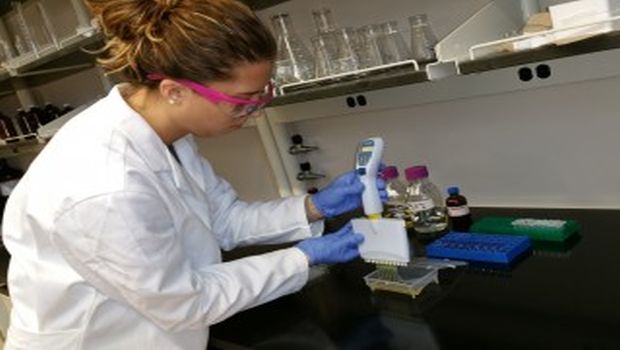 Graduate student Nicole Kennedy measures the antibiotic activity of various samples in the lab. Photo courtesy of Olya Keen Graduate student Nicole Kennedy measures the antibiotic activity of various samples in the lab. Photo courtesy of Olya Keen Chlorine, a disinfectant commonly used in most wastewater treatment plants, may be failing to completely eliminate pharmaceuticals from wastes. As a result, trace levels of these substances get discharged from the plants to the nation’s waterways. And now, scientists are reporting preliminary studies that show chlorine treatment may encourage the formation of new, unknown antibiotics that could also enter the environment, potentially contributing to the growing problem of antibiotic resistance. The research, which will be presented March 23 at the 249th National Meeting & Exposition of the American Chemical Society (ACS), suggests that a re-evaluation of wastewater treatment and disinfection practices is needed. “Pharmaceuticals that get out into the environment can harm aquatic life, making them react slowly in the wild and disrupting their hormone systems,” notes Olya Keen, PhD. She adds that increased antibiotic exposure, even at low levels in the environment, can lead to development of antibiotic-resistant microbes and a general weakening of antibiotics’ abilities to fight bacterial infections in humans. “Treated wastewater is one of the major sources of pharmaceuticals and antibiotics in the environment,” says Keen. “Wastewater treatment facilities were not designed to remove these drugs. The molecules are typically very stable and do not easily get biodegraded. Instead, most just pass through the treatment facility and into the aquatic environment.” But besides failing to remove all drugs from wastewater, sewage treatment facilities using chlorine may have the unintended consequences of encouraging the formation of other antibiotics in the discharged water. Keen, graduate student Nicole Kennedy and others in her team at the University of North Carolina at Charlotte ran several lab experiments and found that exposing doxycycline, a common antibiotic, to chlorine in wastewater increased the antibiotic properties of their samples. “Surprisingly, we found that the products formed in the lab sample were even stronger antibiotics than doxycycline, the parent and starting compound,” she adds. Keen has not yet identified all the properties of these “transformation products,” and that research is now underway. She notes that these compounds could turn out to be previously unidentified antibiotics. Keen explains that the best solution may be to decrease the amount of these drugs that reach a treatment plant in the first place. Currently, disposal of pharmaceuticals is not regulated, however. So she urges a greater emphasis on collecting and incinerating old pharmaceuticals, rather than dumping them down the drain or placing them in the trash, which can lead to harmful environmental exposures. In addition, this research has applications to drinking water treatment systems, most of which also use chlorine as a disinfectant, she says. To purify drinking water, chlorine must remain in the distribution piping system for hours, which blocks microbes from growing. But this also provides ample time for chlorine to interact with pharmaceuticals that may be in the water, encouraging development of new antibiotic compounds. Keen acknowledges funding from the University of North Carolina at Charlotte and the National Science Foundation. Source: American Chemical Society  We are happy to inform you that: The 90- day double-blind human clinical study results are finally in! We want to thank Kacper Postawski Companies for taking the initiative to produce these tests. In this 90 day clinical trial study, Adya Clarity was found to reduce: Lead, Mercury, Arsenic, and harmful Aluminum in the human body by an average of 82%. In addition, intracellular hydration was increased by 32% (consider that the most expensive himalayan salt will increase hydration up to 25%). Considering the state of water we have today globally, in addition to increasing environmental toxins, and bioengineering, our bodies are being bombarded by toxic heavy metals, among various other poisons. Also, the majority of us are not receiving proper hydration, because the majority of water we consume, has been altered so badly, that it lost it’s primordial structure that allows it to flow freely into the cells. One becomes much more hydrated by drinking water that was treated with Adya Clarity minerals. Here is a link to view the 90-day Adya Clarity Human Clinical Trial Study: http://waterliberty.com/pdfs/Heavy-Metal-90-Day-Final-21.pdf In case anyone was wondering if Adya ever gave up, it never will. Adya is here to stay, and is an important product in our world today. We will keep on conducting tests to show over and over again the effectivity in such a powerful, simple, and economical product. 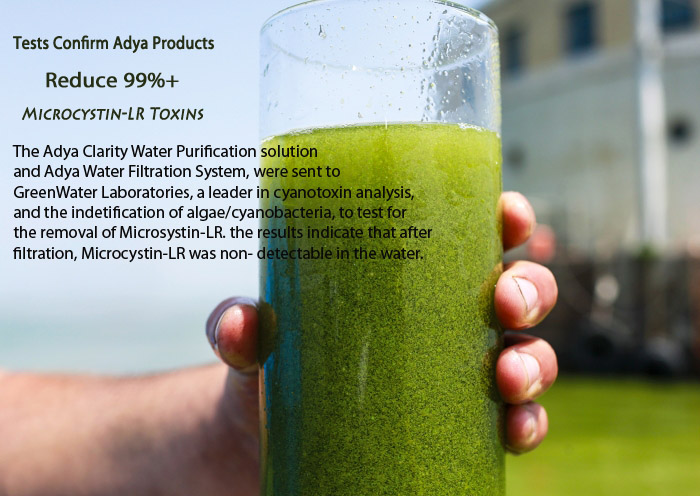 What is Microcystin-LR? Microcystin-LR is one of many toxins produced by cyanobacteria, also known as blue-green (toxic) algae. It is the most frequent and most toxic form of microcystin, and the specific toxin that contaminated Toledo’s water supply. Since the Toledo water crisis occurred, many people have wondered if any home filter systems exist that could have protected against the toxin that contaminated tap water to over 400,000 people. Experts have agreed on one answer, no. This is based on the fact that no filter systems have been tested for the removal of this toxin. A recent article published in the Toledo Blade said this: “Even though filter manufacturers can’t guarantee their systems will filter out the Lake Erie toxins, that doesn't mean that they won’t. It just means that they haven’t done sufficient testing for the toxins. The manufacturers now say that they are looking at testing their equipment for microcystin toxins.” And that’s exactly what we did. The Adya Clarity Water Purification Solution and Adya Water Filtration System* were sent to GreenWater Laboratories, a leader in cyanotoxin analysis and the identification of algae/cyanobacteria, to test for the removal of Microcystin-LR. One liter of water was spiked with 10 ppb of Microcystin-LR, nearly four times the amount that was found in Toledo’s water supply. Adya Clarity was added to the spiked water and poured through the filter system. Below is a summary of the results. Summary of Results: Sample MC Levels (µg/L) Pre Filtration (10 ppb MC-LR) 10.8 Post Filtration (10 ppb MC-LR) ND ND = Not detected above LOD/LOQ LOD/LOQ = 0.15 µg/L The results indicate that after filtration, Microcystin-LR was non-detectable in the water. This proves that our products can be used by consumers to effectively protect their drinking water from Microcystin-LR contamination, as well as a remediation for other freshwater sources. It is our goal to partner with companies and organizations that are working to eliminate harmful algae blooms that threaten our water supplies, especially the Great Lakes. Test Results Wikipedia
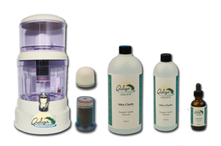 Everyone knows that water is fundamental to life; nothing can live without it. Water makes up over half of our bodies so when we're properly hydrated, our bodies can perform better and more efficient. Because our bodies rely on water so much, it's important that we drink only the best quality. The cleaner our water is, the better it'll be to our overall health and well-being. Nearly all of our drinking water sources contain some level of contamination, whether from natural or man-made contaminants, that pose serious health risks. Water purification, the treatment of water to make it safe by reducing contaminants, is vital to prevent unwanted contaminants in our water. Adya Clarity is an all-natural, innovative water purification solution that's pioneering a brand new and highly effective way to purify water. Read on to discover what makes Adya Clarity the ultimate water purification solution Adya Clarity purifies water without the use of synthetic chemicals. Water suppliers add disinfectants like chlorine to drinking water to help control microbes. When disinfectants react with naturally occurring materials in water, they form harmful disinfection byproducts like trihalomethanes. Trying to control microbes while limiting health risks from disinfection byproducts is a major issue for water suppliers. Adya Clarity is an all-natural solution of purified water and concentrated mineral salts that eliminates the need for chemical disinfectants and will never create harmful byproducts. In fact, Adya Clarity reduces disinfection byproducts like chloramines and trihalomethanes in water to undetectable levels. Adya Clarity is effective against some of the worst and most common contaminants. Allergic reactions, reproductive and developmental disorders, kidney damage, endocrine disruption, and cancer. These are just a few harmful health risks linked to many of the contaminants found in water supplies. Adya Clarity has been tested and proven to significantly reduce hundreds of these contaminants such as:
Adya Clarity allows you to drink tap water with confidence. Water, an essential element in ones life. One can last up to 60 days or even more without food. Longest noted without water, was one week… Can today's drinking water be fully trusted? Who is distributing all the so-called spring water bottles? Aren't they the same as the big corporations that supply most of the processed foods that can be found on the shelf in any supermarket today? And one may wonder, if these corporations are the ones to decide which water to sell us while labeling it "spring water", can they be 100% trusted, or can they not? Knowing this can provide one an opportunity to take charge of what they consume, and I think that would be a wise step, don't you?
Once at a health and wellness expo where we had a booth displaying Adya Clarity products, we purchased prior, a pint of a well known 'spring water' brand, added Adya Clarity to it, and let it sit on our table. Lo and Behold! After a few hours a yellow layer could be found on the bottom of the bottle…! And one may ask themselves, why should I pay $2.50 for impure water in a fancy packaging? Does that water actually hydrate and mineralize ones body? Hmmm… Asking such questions may be the first step in waking up and making a personal shift in what one allows into their body (and out of their pocket)… Realizing that waters original purpose is to hydrate, mineralize, and detox the body of impurities. Water was once highly mineralized and clean, thus fulfilling it's full purpose. I invite you to take two cups of water: one filtered, one filtered with Adya minerals in it, and sip from the filtered only one first, then from the one with the Adya. People who I have done this test with in the past, have noted that there was a significant difference between the two. The water with the Adya tasted 'lighter', and felt like it was absorbed more easily into the body, and mental clarity was enhanced. The minerals in Adya break the water molecules in half, while structuring the water, as well as releasing trapped oxygen from the water (oxygenating), and of course purifying from contaminants. The result- highly hydrating, and mineralizing water. Calculating the cost effectiveness of Adya vs. a $2.50/pint of so-called 'spring water', reveals a shocking truth- Adya Clarity costs only 60 cents per day per person (considering they drink 1 gallon a day)- 60 cents per day for one gallon of the best water one can get these days (unless they take a long trip to some high elevation area where clean springs still exist- and still they won't find water with 100 minerals in it…)!!! Hmmmm: $2.50 per pint of filtered water, or 60 per gallon of health generating, pure, clean, structured, hydrating water? Which one would you choose, now to take care charge of your water today? |
AuthorWritten by http://www.infectioncontroltoday.com Archives
December 2016
|

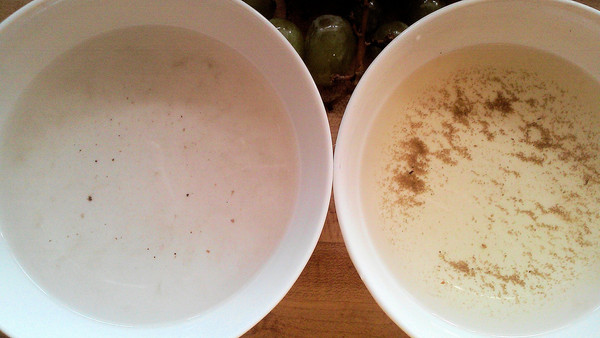
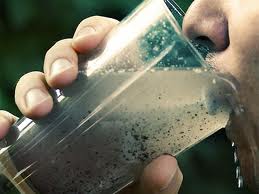





 RSS Feed
RSS Feed
